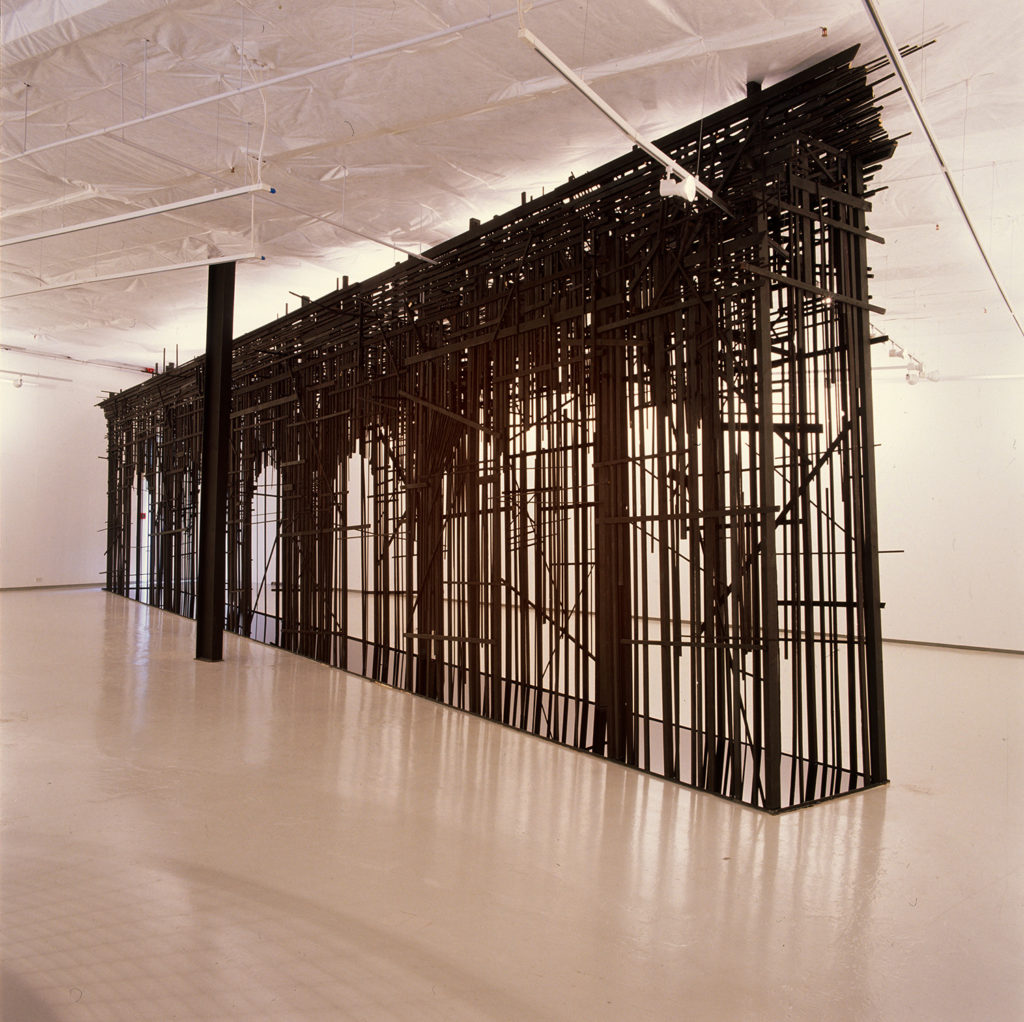ARTISTS Alexander Brodsky, Ilya Utkin CURATOR Gregory Burke PUBLICATION publisher Wellington City Art Gallery; editor Gregory Burke, texts Gregory Burke, Alexander Rappaport, Paul Walker
Russian artists Alexander Brodsky and Ilya Utkin met as students at Moscow Institute of Architecture in 1972. When they graduated six years later, they received a single diploma with both their names on it. Constrained by the functionalism and utilitarianism of architecture in the Soviet Union in the Brezhnev years, they became ‘paper architects’. This initially derogatory term was applied to avant-garde architects producing radical work but unable to realise their visions.
Brodsky and Utkin made the label their own, producing fantastical, impossible designs. Presented as etchings resembling eighteenth- and nineteenth-century prints, their schemes incorporated elements of classical mythology and science fiction. Designs like Forum de Mille Veritas [Forum of a Thousand Truths], Intelligent Market, and Villa Claustrophobia were never developed to be built, but function as a form of architectural critique, answering theoretical rather than practical problems. At the time of the City Gallery show, Brodsky and Utkin had only completed one building project: the Atrium Restaurant in Moscow.
Brodsky and Utkin’s Wellington show included over forty etchings and two installations—Palazzo Nero and Monument—built, during their stay, from recycled timber. The lengths of wood painted black replicated the scratched lines of their etchings. Brodksy explained: ‘We start with a number of etchings and then turn them into the sculpture. We try to make a kind of three-dimensional drawing, a sculpture that looks like a “drawing.”’
Palazzo Nero filled the downstairs gallery. Over three metres high, the black skeletal structure evoked a model of a Venetian Palazzo, one end sinking into a tray of sump oil, which reflected the sculpture looming above it. The title Palazzo Nero [Black Palace] alludes to Emperor Nero’s legendary palace, the Domus Aurea, built after the Great Fire of Rome. Some believed Nero started the fire in order to clear the grounds to build it.
Outside, in the newly completed Civic Square, assisted by fifty local architecture students, Brodsky and Utkin erected Monument—a freestanding black tower topped by a small sail, and guyed to a pole. Described by the artists as ‘a testimony to the city and its people’, it blew over just days after its construction, defeated by the Wellington wind, its structural demise adding a layer of irony and ambiguity to the project. ‘We don’t get wind like that in Moscow’, Brodksy told the Dominion.
In his Art New Zealand review, Mark Burry wrote: ‘For Wellington the work broke new ground: it was very much an architectural exhibition but in a subtle context beyond conventional architectural exposé of models, photographs, drawings, and dioramas.’ The show was accompanied by a two-day symposium, In the Metropolis, instigated by the Gallery and the Architectural Centre. Speakers included New York architecture critic Herbert Muschamp and Victoria University’s Paul Walker. The show’s street poster—reproducing the etching Dome—was so popular that locals ripped copies off billboards. The gallery archive includes the artists’ original working drawings for both Palazzo Nero and Monument.
In 1993, Brodsky and Utkin ended their collaboration, in order to pursue individual practices.







































